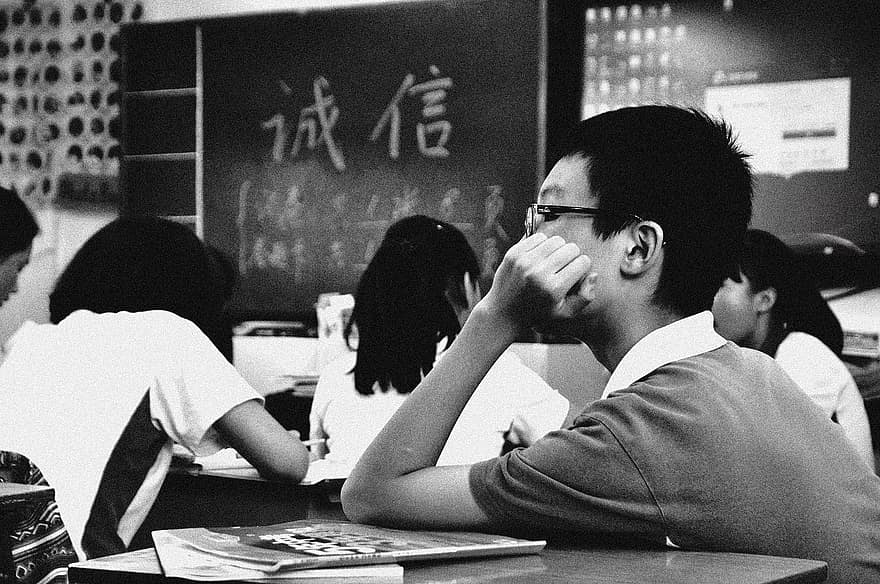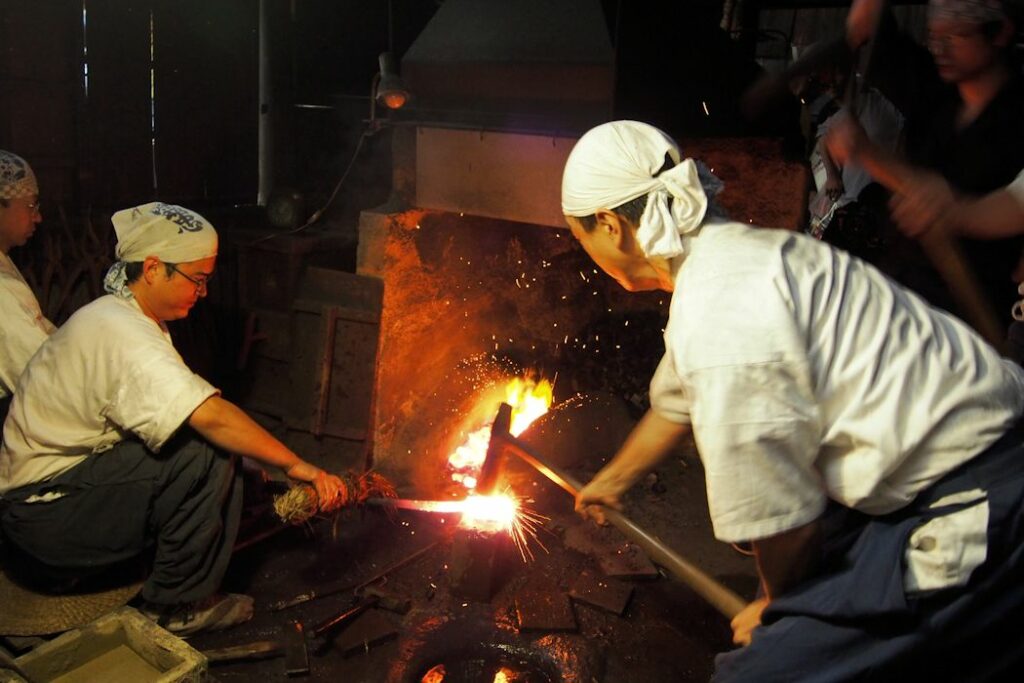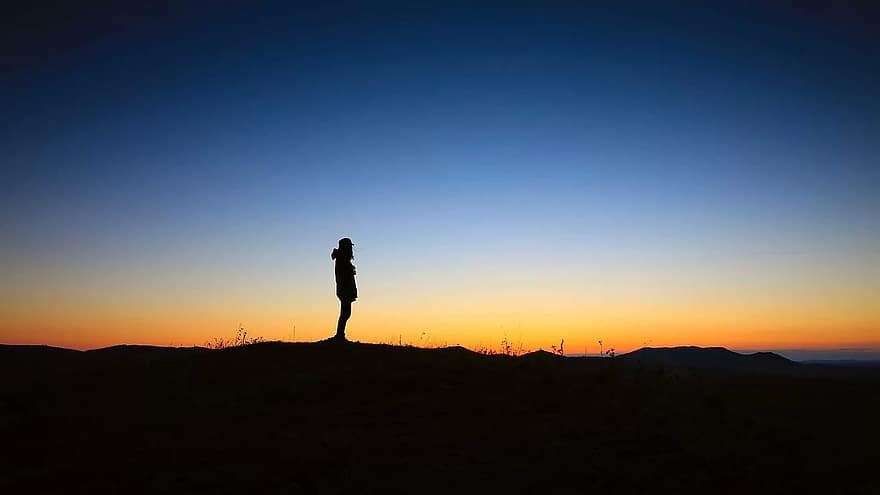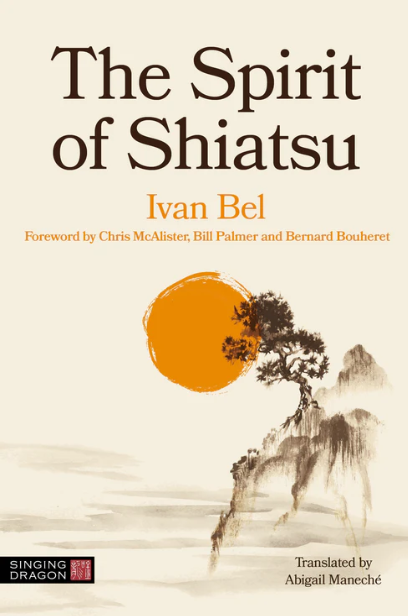Whether we are learning, feeling, studying or practicing Shiatsu, the notion of time is an indispensable factor that we cannot compress. This is true for all of the “Paths” (Do), whether they are therapeutic, artistic or martial. Asian philosophy teaches us that techniques are not mere simple repetitions of gestures, but a path that leads from oneself to the other and back to oneself. This is how we move from technique to art and from art to spirituality. And for this, time is very important!
Time to learn
Students are always thirsty for knowledge and discovery. Everything new is beautiful, as the saying goes. Having been there myself, one can easily understand the exhilarating feeling of learning something new as soon as one meets a new teacher, or when one follows a new course. In Shiatsu this feeling is particularly strong, because it is not only intellectual our brain, but also physical, our bodies. The theories and the choice of their applications, the manual pressures and the articular mobilizations, all combined with working with another person, produces a physical-intellectual pleasure which is truly rewarding. We can fall into the trap of always wanting more, more often, more quickly but it would be a mistake to follow our desires. We need to appreciate, to learn, how to slow down, how to take our time.
In a regular course, in a school, the teacher’s role is crucial in terms of time management. He or she has to be the guarantor of the learning rhythm and sometimes to slow down the students, teaching them deeper, subtler or finer diagnostic techniques and more complex physical and feeling exercises. This requires time, much listening and much repetition. Why is this the case? Because most of the time in Shiatsu, the lesson is given by the body. Not by the mind. The sensations must be regularly repeated to become a habitual. Then little by little they infuse the muscles, the cells, until one day the brain can put order and words to what the body has experienced.
As a beginner, it seems that you can do all this very quickly. What teacher hasn’t had a student who was more gifted than the others, capable of rapid progress. In fact, we sometimes receive requests to read more books, to follow two years in one, in short to speed up the process. It would be a disservice to accept the request, as it would saturate the brain and body with too much information. Even if it is frustrating in for some people, one must follow step by step the Way of Shiatsu which will bring what is needed at the right time. If we accelerate the learning process and we get a student who thinks he knows everything about everything without having integrated enough sensations. In the end, this results in a practitioner with little experience at the beginning who will have to face either discouragement or panic in front of the complexity of the cases, or an ego too full of certainties.

If you look here and there on the internet you can find “complete and professional” Shiatsu courses in a few weekends or even in two years. The general tendency to provide courses over a period of 3 years or +/- 500 hours is already a bit short, so less than that seems to be an aberration. Ask a practitioner with 20 years’ experience if he/she feels that he/she understands or masters everything he/she does? Far from it. So, to believe that you can speed up the learning process without paying the consequences later on is a fundamental mistake.
In our fast-paced society, where you can just pay to have anything delivered to you and thus get anything and everything without effort, you would think that the same would be true of Asian arts. But if traditionally an apprentice stayed with his master for a minimum of ten years, there was a good reason. The time to deepen the learning and understand the subtleties of a way of thinking that is not ours, to feel the fluctuations of energy and body tissues takes years and years. The only good way to learn is always to choose the long path, with patience and humility. Not easy…
Time for practice
After studying comes the time for practice. At least in our western system of study. The Namikoshi Shiatsu School in Tokyo, for example, requires both at the same time, with 2500 hours of lessons and practice. If we compare with the most advanced European country in terms of number of hours of study, which is Switzerland with 850 hours, there is still a difference of 1650 hours. We understand the gulf that separates us from Japanese students. But hey! Let’s imagine that we are already competent after our studies and that we begin Shiatsu as our only professional activity. I can tell you that everything is still to be learnt.
Everything is still to be learnt because every case that comes to you is a new challenge. Of course, after several years, recurrent disorders and imbalances will be found, but this is far from being a general rule. It is not without reason that teachers repeat to us that the only real masters are our patients. Because each case is unique and teaches us something, even when we think we have mastered a basic subject like back pain. You have to spend at least 10 years repeating gestures, setting intentions, and working on your thoughts about oriental diagnosis and treatment before you feel even slightly confident. Confidence that is regularly called into question by new cases that we do not understand or because we discover an unknown depth in an imbalance. For example: you may be well trained in the treatment of back pain, you have been doing it since you started and it becomes a kind of routine… until the day a more complex case with intestinal problems, emotional stress and a protruding vertebral disc comes along. Your routine no longer holds. You have to search and study again.
The Japanese have an expression for the time of practice: tanren, or the forge. They are able to work 6 days a week, 8 to 10 hours a day, 11 and a half months a year. The total time off in this country is on average 18 days. Now imagine doing Shiatsu at this pace. It strengthens, forces you to look for ways to improve, to save energy, to find mental strength and to strengthen your body to do it. This is the forging. “A thousand times you will put your work back on the job” they are used to saying. Here, we are well beyond a thousand times.

By the way, let’s do a little calculation to understand what this represents: 365 days per year – 18 holidays – 52 Sundays = 295 working days. At a rate of 295 x 8 hours per day = 2360 hours per year. Even if the practitioner does not fill up all the time, this is still a great experience per year. Who in the West can manage even 1000 hours of sessions per year? Not many Westerners can say that. The experience can therefore be calculated and we can better understand the notion of forging the body, the mind and the know-how.
In neuroscience, there are studies that say that you become an expert in anything once you exceed 10,000 hours of work on a given subject. If the Beatles were so good, apart from their musical genius, it’s because before they were famous, they had played in Hamburg (Germany) for a long time in bars, every day or rather every night. They had accumulated an impressive amount of experience, around 10, 000 hours. Now, do your own calculations to see if you have exceeded the 10,000 hours of practice. Depending on your pace, this represents a minimum of 10 years of practice for intensive workers and up to 15-20 years for others. This does not mean that you have to exhaust yourself in Shiatsu, but simply that you have to take into account the reality of the practice time, before you can consider yourself to be “good”.
Time to teach
We sometimes hear of students that want to teach and although this is very commendable, they still have to go through this time of being “forged”, as we have just seen, before they can imagine teaching. In teaching circles (national educational systems) it is often said that a teacher must always know 10 times more than what he or she teaches. This is only possible for people who are constantly learning throughout their lives and accumulate a lot of experience in their practice. Otherwise, there is a great risk of not knowing how to answer and of lacking depth in the answers. In Shiatsu this can be seen or felt at first contact. In the end, people who teach too early, do themselves and their students a disservice. These students lack knowledge and sufficient experience of Shiatsu treatments in the body. This is also the worst publicity that a teacher can give himself/herself, because if a reputation can take years to build up, it only takes a very short time for it to be demolished.

Teaching is an art in itself, which has nothing to do with the technical mastery of Shiatsu. You can be very good at what you do and be completely useless at passing on your understanding. During our school years we may have all met this kind of teacher, the one that we loved to hate. So, you also need to be trained in pedagogy, group management, public speaking, class dynamics, the rhythm of exchanges between theory and practice, teaching ethics and deontology, not to mention some useful management notions for the school’s finances. And this has nothing to do with Shiatsu, which will be “only” the content of the course. Of course, one can learn to teach on the job, but that means having poorly trained students in the first years. This is a choice.
Once again, there is no point in running, in rushing. You have to take your time, think things through, train and structure your courses before you start. Not to mention a lot of work on yourself beforehand. This is the only way to get students who will form the future generations of practitioners who will in turn represent your school, your name and the whole of Shiatsu to the public and the authorities. The problem is that there is little or no training for Shiatsu teachers. So, you have to take your time before you can declare yourself a teacher.
Time for a story
Twenty-five years ago, during one of my trips to China, I made friends with two bandits, real mafiosi, in the south of the country. As evening fell, we had a few drinks while all the people who came to greet them before going to work passed by: pickpockets, prostitutes, street vendors, street-side restaurant owners, card and mahjong swindlers, and so on. In talking to them, I discovered that they had both been kung fu practitioners for at least 30 years. I asked them for a friendly fight and soon found myself on a small path between two rice fields facing a small but strong man. It took him only 10 seconds to propel me 4 meters and to find my butt in the water of a rice field. I burst out laughing and nobody lost face, so the evening went on. They then gave me a very high level demonstration like those you can sometimes see in the big martial arts festivals in Europe and I congratulated them. Then I asked if they had ever thought of teaching and opening a class. Suddenly there was an icy silence and I saw their faces turn livid. One of them answered with a trembling voice: “But we are not trained enough. And if our master found out that we were teaching without finishing our training, I think he would be able to kill us with his own hands”. You could see the fear on their faces.
This anecdote allows us to understand the difference in perception of time and level between a good practitioner in the West and in the East. This is why the Shiatsu or martial arts federations argue that one needs at least 10 years of professional practice before being able to teach, because it is really a mini-minimum. It is not possible to be credible unless you have at least this experience. For my part, I would add that it takes at least 8 years of training within a school to begin to feel legitimate in one’s own practice and I encourage all my students to continue their journey in other schools. Finally, in discussions with many different Japanese and Western personalities for the interviews that you can find on this blog, all of them estimate that it takes 20 years of practice to become an expert, and 30 to 40 years to become a reputable teacher, of those who one day are called “master”. This gives us time to mature.
Good practice in the time of Shiatsu.
________________________________________
Author: Ivan Bel
Translator: Paul Banester
- A Milestone: The 2025 ESF Symposium in Brussels - 24 March 2025
- Austria – 19-21 Sept. 25: Shiatsu Summit in Vienna – chronic fatigue, burnout & depression - 19 December 2024
- Terésa Hadland interview: Shiatsu at core - 25 November 2024
- Book review: “Another self” by Cindy Engel - 30 September 2024
- Austria – 24-26 Oct. 25: Master Class in Vienna – Shiatsu and martial arts - 20 August 2024
- France – Lembrun Summer Intensive Course – July 6 to 12, 2025: Digestive System Disorders, Advanced Organ Anatomy, and Nutrition - 4 August 2024











